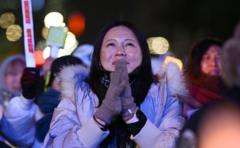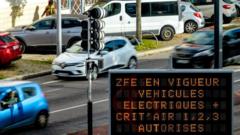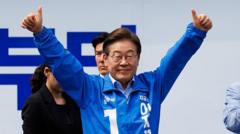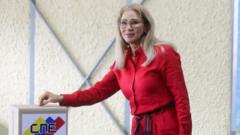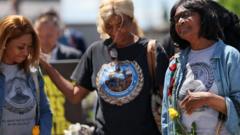In a significant outpouring of support amidst a turbulent political landscape, more than 55,000 supporters of Serbian President Aleksandar Vucic convened in Belgrade for a rally. This event, dubbed the launch of a "Movement for the People and the State," aimed to counter months of protests triggered by the tragic collapse of a railway station canopy in Novi Sad, which claimed 15 lives and sparked outrage over alleged government corruption.
Pro-Government Rally in Serbia Attracts Tens of Thousands Amid Ongoing Protests
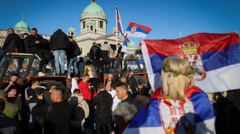
Pro-Government Rally in Serbia Attracts Tens of Thousands Amid Ongoing Protests
A large pro-government event in Belgrade highlights divisions as protests continue against President Vucic's administration.
The rally took place against a backdrop of unrest that has gripped Serbia since the catastrophic incident last November. While supporters of Vucic celebrated their leader's tenure, they gathered in considerably smaller numbers compared to the mass demonstrations observed last month, where up to 325,000 people protested against the government's handling of infrastructure safety and alleged malfeasance.
Vucic addressed the crowd, condemning the anti-government rallies and accusing participants of being financed by foreign entities seeking to destabilize Serbia. He characterized the protests as threats to national peace and sovereignty. Notably, he targeted national broadcaster RTS as a key player in what he termed an attempt at a "colour revolution," reflecting his criticism of media coverage of the situation.
The rally and the ongoing protests amplify the prevailing political tension in Serbia, revealing a clear divide between the government's supporters and opponents. Protestors have chanted "corruption kills," blaming the administration—not only for the tragic event that sparked anger but also for a decade of governance marked by concerns over safety and transparency in public projects.
As the political landscape continues to evolve, the discord between Vucic's government and the growing opposition movement underscores the challenges faced in addressing public grievances and restoring confidence in political institutions.
The recent events expose a critical juncture for Serbia, where the paths forward could either unify or further polarize the nation.
Vucic addressed the crowd, condemning the anti-government rallies and accusing participants of being financed by foreign entities seeking to destabilize Serbia. He characterized the protests as threats to national peace and sovereignty. Notably, he targeted national broadcaster RTS as a key player in what he termed an attempt at a "colour revolution," reflecting his criticism of media coverage of the situation.
The rally and the ongoing protests amplify the prevailing political tension in Serbia, revealing a clear divide between the government's supporters and opponents. Protestors have chanted "corruption kills," blaming the administration—not only for the tragic event that sparked anger but also for a decade of governance marked by concerns over safety and transparency in public projects.
As the political landscape continues to evolve, the discord between Vucic's government and the growing opposition movement underscores the challenges faced in addressing public grievances and restoring confidence in political institutions.
The recent events expose a critical juncture for Serbia, where the paths forward could either unify or further polarize the nation.



